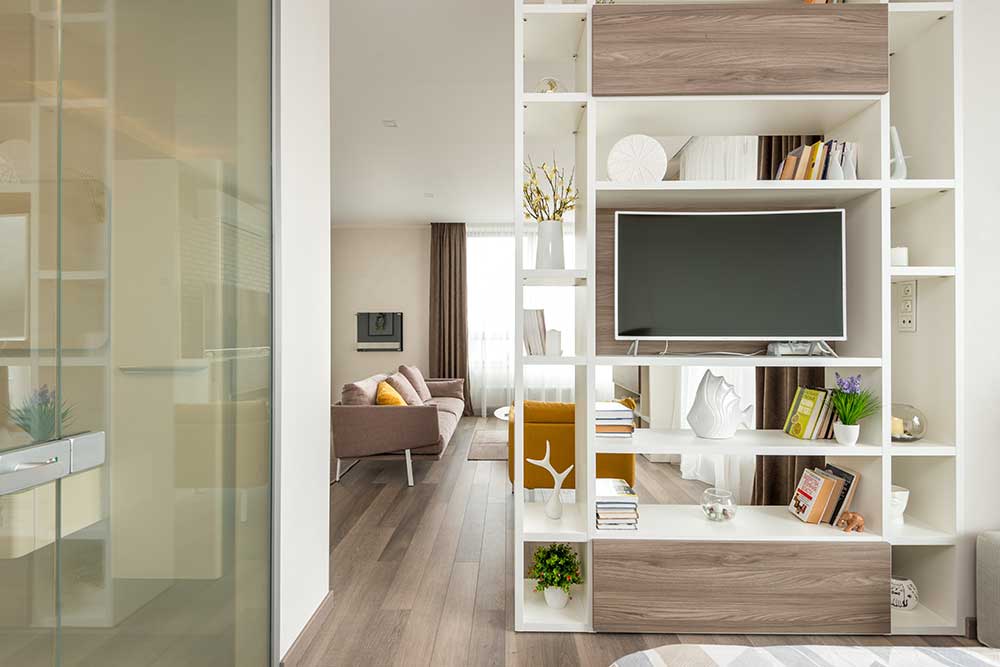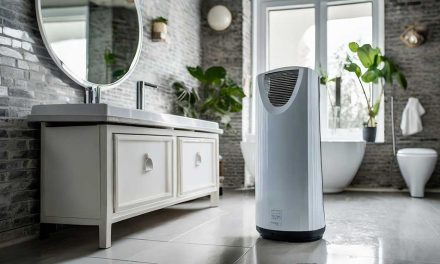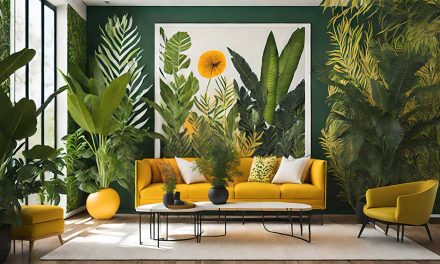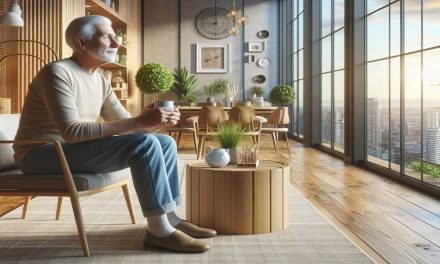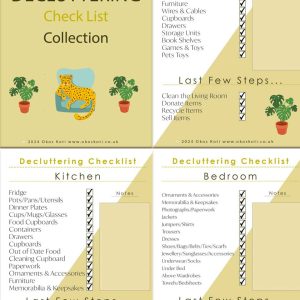Sustainable Interior Design: 5 Mind-Blowing Innovations Changing the Game
Sustainable interior design stands at the brink of an exciting transformation. Embracing a myriad of cutting-edge innovations, it is redefining how we envision and interact with our living spaces. With technology advancing and societal values shifting towards sustainability and personalised experiences, the future of interior design becomes a canvas of limitless possibilities.
Transitioning towards this future are several groundbreaking innovations that are revolutionising the field. Let’s embark on a captivating journey through five mind-blowing advancements shaping interior design’s future.
Seamless Integration of Smart Homes
The realm of smart homes brings together intelligent systems and AI-powered virtual assistants, seamlessly creating living environments that cater to our every need. Whether it’s the touch of a button or a simple voice command, these innovative homes are designed for ultimate convenience and efficiency.
Biophilic Design: Reconnecting with Nature
Biophilic design, a pioneering approach, reshapes living spaces by incorporating nature-inspired elements. This design philosophy seeks to promote wellness and harmony by bringing us closer to nature within our indoor environments.
Sustainable Materials and Circular Economy
The future of sustainable interior design relies heavily on using eco-friendly and renewable materials. Embracing the concept of a circular economy, designers are finding creative ways to reduce waste and enhance the longevity of products, ensuring a greener and more sustainable future.
Virtual and Augmented Reality Transforming Design Visualisation
Design visualisation is undergoing a paradigm shift by integrating virtual and augmented reality technologies. These innovations enable clients to experience and interact with their future spaces in unprecedented ways, fostering greater collaboration between designers and homeowners.
Energy-Efficient and Net-Zero Buildings
As sustainability takes centre stage, the focus is on energy-efficient and net-zero buildings. These structures aim to minimise energy consumption and carbon emissions, paving the way for a more environmentally friendly and energy-independent future.
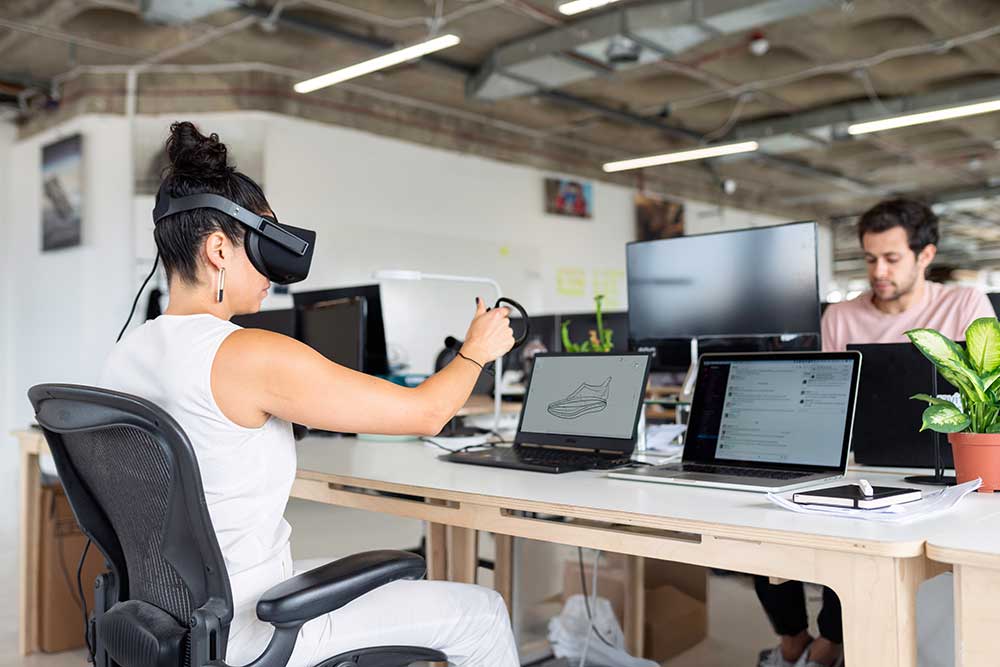
Smart Homes and AI Integration
One of the most significant and revolutionary advancements in the field of interior design is the seamless integration of smart home technology and artificial intelligence (AI). Smart homes are no longer a distant dream of the future; they are increasingly becoming a reality in the present, redefining how we interact with and experience our living spaces. By leveraging cutting-edge technologies, these intelligent systems transform our homes into efficient, responsive, personalised environments that enhance comfort, convenience, and energy efficiency.
AI-Powered Virtual Assistants: Enhancing Control and Connectivity
At the heart of this transformative shift are AI-powered virtual assistants, such as Amazon’s Alexa and Google Assistant. These voice-activated interfaces have evolved from mere gadgets to indispensable companions, allowing us to effortlessly control various aspects of our homes with simple voice commands. From adjusting lighting levels to setting the perfect room temperature and even managing our security systems, smart home virtual assistants have become essential elements of our daily lives, seamlessly merging technology with our living spaces.
Interconnected Smart Devices: The Power of IoT in Sustainable Interior Design
The rise of the Internet of Things (IoT) has been a driving force behind the interconnectedness of smart devices within our homes. IoT technology enables seamless communication and synchronisation among various devices and appliances, making our living spaces truly intelligent and interconnected. For instance, a smart thermostat can communicate with smart blinds and lights, creating an energy-efficient ecosystem that optimises comfort while reducing energy consumption.
AI-Driven Design: Personalised Concepts and Efficient Solutions
The impact of AI on interior design extends far beyond the realm of home automation. Interior designers now have access to advanced algorithms capable of analysing vast amounts of data. This includes factors like client preferences, style trends, and specific space requirements. By using AI-driven solutions, designers can generate highly personalised design concepts that align precisely with each client’s unique tastes and needs.
Immersive Visualisations: The Role of VR and AR in Interior Design
Virtual reality (VR) and augmented reality (AR) technologies are also playing a transformative role in the interior design process. Designers can now create immersive 3D visualisations that allow clients to virtually walk through and explore their future spaces. This level of interactivity provides clients with an in-depth understanding of the design concepts, empowering them to make well-informed decisions before the actual construction or renovation takes place. As a result, this not only enhances client satisfaction but also saves time and resources by minimising the need for design revisions.
Unleashing Creativity and Efficiency: The Future of Sustainable Interior Design
The integration of AI and smart home technologies is reshaping the interior design landscape by optimising creativity and efficiency. With the power of AI at their disposal, designers can focus more on unleashing their imaginative capabilities and less on repetitive tasks. As the capabilities of AI continue to evolve and improve, the future of interior design promises an even more seamless and personalised experience, revolutionising how we design, live, and interact with our living spaces.
Game-Changing Smart Devices: Revolutionising Everyday Living
Check out the Echo Dot (4th generation) in Twilight Blue.🌟
The Echo Dot (4th generation) in Twilight Blue is a stylish and compact smart speaker. Its integration with Alexa makes it a powerful addition to any smart home. The Twilight Blue colour is aesthetically pleasing, blending seamlessly into various room styles. With voice-controlled capabilities, it’s likely to offer convenience and entertainment for users, making it a worthwhile choice for those seeking a voice assistant device.
Check out the Tapo Smart Plug Wi-Fi Outlet🌟
The Echo Dot (4th generation) in Twilight Blue is a stylish and compact smart speaker. Its integration with Alexa makes it a powerful addition to any smart home. The Twilight Blue colour is aesthetically pleasing, blending seamlessly into various room styles. With voice-controlled capabilities, it’s likely to offer convenience and entertainment for users, making it a worthwhile choice for those seeking a voice assistant device.
Check out the ANTELA Smart Bulb🌟
The ANTELA Smart Bulb B22 is a game-changer in lighting. With the ability to change colour and adjust brightness via the Smart Life app, it offers versatile lighting options. Compatibility with Alexa and Google Home allows for seamless voice control. Plus, the absence of a hub requirement makes installation hassle-free. This 2-pack of smart bulbs is an excellent choice for modernizing your home lighting.
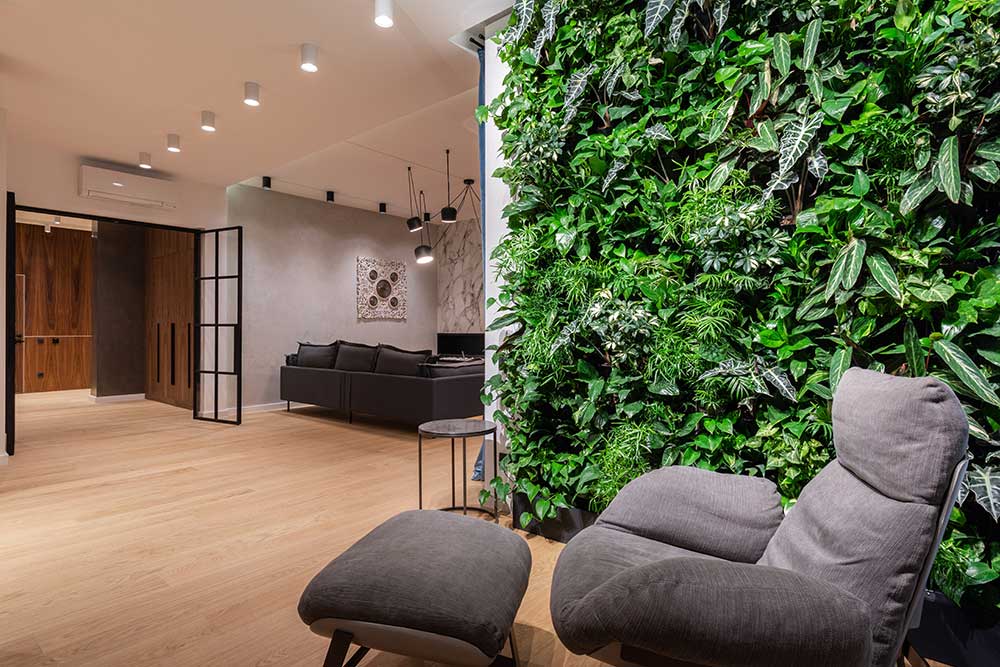
Biophilic Design and Nature Integration
In an era dominated by urbanisation and technological advancements, the human connection to nature has become increasingly distant. As we find ourselves immersed in concrete jungles and digital screens, an essential need arises to bring nature back into our lives. Biophilic design emerges as a groundbreaking approach that seeks to bridge this gap, creating interior spaces that embody the essence of the natural world. By integrating organic elements and mimicking nature’s patterns, biophilic design revolutionises interior spaces, promoting wellness, productivity, and emotional well-being like never before.
Living Green Walls: A Verdant Manifestation of Biophilic Design
At the heart of biophilic design are its captivating natural elements that effortlessly blend the outside world with indoor environments. Living green walls, often referred to as vertical gardens, are a mesmerising manifestation of biophilic design. These verdant masterpieces adorn interior walls with lush foliage, bringing a breath of fresh air into our living spaces. Besides their aesthetic appeal, living green walls actively contribute to improving air quality by absorbing pollutants and releasing oxygen, thus fostering healthier and more rejuvenating atmospheres.
Harnessing the Power of Natural Light: Illuminating Spaces with Biophilic Design
The integration of natural lighting is another paramount aspect of biophilic design. Large windows, skylights, and light wells are skilfully employed to flood interior spaces with the soothing radiance of natural sunlight. This illumination not only elevates the space’s visual appeal but also profoundly impacts our well-being. Sunlight is known to regulate our circadian rhythms, enhancing our sleep patterns and promoting a balanced mood. As the soft rays of the sun dance across our living spaces, a sense of connection to the outdoors is established, nurturing a profound bond with nature.
Tranquillity Within: Indoor Water Features as Elements of Biophilic Design
Indoor water features are also instrumental in biophilic design, creating a sense of tranquillity and harmony within interior spaces. The gentle sound of flowing water from cascading waterfalls or serene ponds imbues the environment with a peaceful ambience. Besides their aesthetic allure, these water elements contribute to better air quality by naturally regulating humidity levels, making indoor spaces more comfortable and pleasant.
Embracing Nature’s Authenticity: Sustainable Materials in Biophilic Design
In addition to natural aesthetics, biophilic design uses materials that resonate with nature’s authenticity. Wood and stone, with their inherent warmth and organic textures, are favoured materials in biophilic design. These natural elements bring a sense of grounding and cosiness to the interior, evoking a feeling of being one with the environment. By incorporating responsibly sourced and sustainable materials, interior designers actively contribute to environmental conservation and showcase their commitment to eco-conscious living.
Sustainability at the Core: Biophilic Design’s Eco-Conscious Approach
Moreover, biophilic design’s impact extends beyond aesthetics and well-being; it is fundamentally rooted in sustainable practices. Embracing eco-friendly materials, such as reclaimed wood, reduces the demand for new resources and minimises environmental waste. Energy-efficient lighting solutions, including LED technology and optimised natural lighting, lead to reduced energy consumption, supporting sustainable living practices.
Intelligent Systems for a Greener Future: Smart Climate Control in Biophilic Design
Furthermore, the incorporation of smart climate control systems further enhances biophilic design’s eco-conscious approach. These intelligent systems regulate heating, cooling, and ventilation based on occupancy and outdoor conditions, optimising energy usage and reducing the ecological footprint of interior spaces.
Biophilic Design: Transformative and Sustainable
Biophilic design is not merely a design trend but a transformative movement that emphasises the significance of nature in our lives. By seamlessly integrating natural elements into our indoor spaces, biophilic design enhances wellness, reduces stress, and fosters cognitive function. Beyond the aesthetic appeal, this design philosophy aligns with sustainability principles, creating interior spaces that nurture both individuals and the planet. As biophilic design continues to evolve, its profound impact on the way we interact with our indoor environments paves the way for a harmonious relationship between the built environment and the natural world.
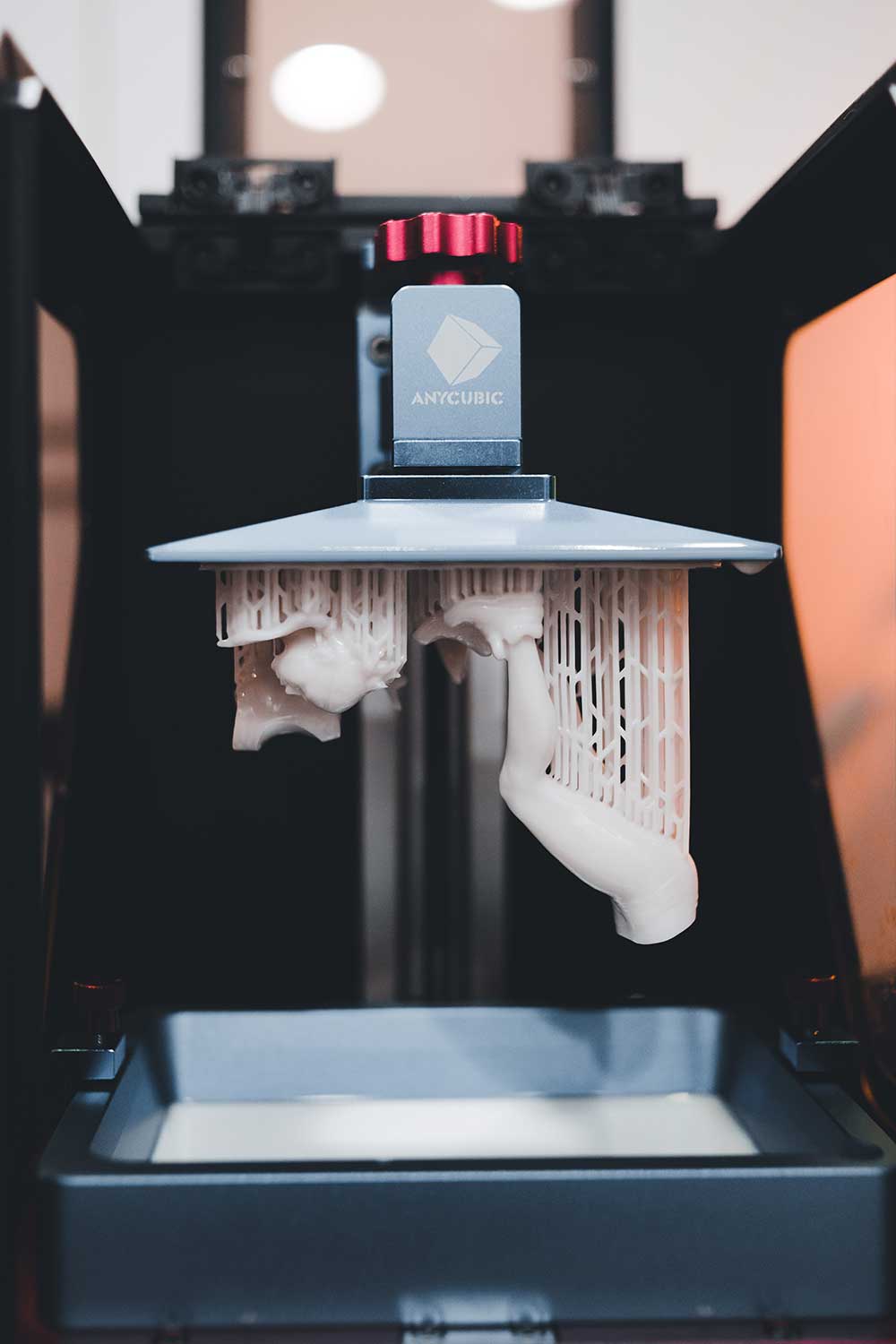
3D Printing in Interior Design
The advent of 3D printing technology has sparked a revolution in various industries, and interior design is no exception. This cutting-edge innovation has transformed the creative landscape, empowering interior designers to unleash their imagination and bring unprecedented levels of intricacy and personalisation to their projects. Gone are the days when design constraints limited the scope of creativity; 3D printing has ushered in a new era of limitless possibilities in interior design.
Bespoke Furniture: Redefining Customisation with 3D Printing
One of the most significant advantages of 3D printing in interior design is its ability to produce intricate and highly customised elements with unparalleled precision. Designers can now craft bespoke furniture pieces that embody unique shapes and structures, tailored to fit specific spaces and individual preferences. This level of personalisation was once a privilege reserved for high-end custom-made designs, but 3D printing has democratised this luxury, making it accessible to a wider audience.
Artistry Unleashed: 3D Printed Decorative Objects and Lighting Fixtures
Decorative objects and lighting fixtures are also undergoing a transformation thanks to 3D printing. The technology enables designers to experiment with intricate patterns, textures, and shapes that were previously challenging to achieve through traditional manufacturing methods. From exquisitely detailed lampshades to artistically sculpted vases, 3D printing allows interior designers to infuse their creations with a level of artistry and individuality that captivates the eye and sparks conversation.
Sustainable Interior Design: Embracing Eco-Friendly Materials with 3D Printing
Moreover, 3D printing offers unprecedented freedom in material selection, facilitating a shift towards sustainable interior design practices. Traditional manufacturing often generates significant waste due to material limitations and cutting processes. In contrast, 3D printing utilises only the material necessary for creating the object, minimising waste and conserving resources. Additionally, designers can explore eco-friendly and recyclable materials, further reducing the environmental impact of interior design projects.
DIY Culture and Personal Expression: Empowering Homeowners with 3D Printing
The accessibility of 3D printing technology has also nurtured a growing DIY culture in interior design. Homeowners with a passion for creativity can now actively participate in the design process by creating their own customised decor pieces. Armed with user-friendly 3D modelling software and affordable 3D printers, individuals can bring their design ideas to life, reflecting their personalities and tastes in every detail. This hands-on approach instils a sense of pride and ownership in the final product, creating truly unique and meaningful living spaces.
Beyond Mass Production: Redefining Sustainable Interior Design with Bespoke 3D Printing
The paradigm shift brought about by 3D printing is also challenging the conventional notion of mass production. 3D printing heralds a new era of bespoke design in a world dominated by standardised products. Each piece can be tailored to suit the individual needs and desires of the client, blurring the lines between mass production and artisan craftsmanship. As technology evolves and becomes even more accessible, interior design is witnessing a renaissance where creativity knows no bounds.
Unleashing Creativity: The Promising Future of 3D Printing in Interior Design
3D printing has undoubtedly revolutionised interior design, empowering designers to explore uncharted territories of creativity and personalisation. The ability to produce intricate and customised elements, the emphasis on sustainability, and the rise of DIY culture are reshaping the way we design and experience interior spaces. As 3D printing technology continues to advance, it promises to unlock even greater potential for innovation, inspiring a new generation of interior designers to dream big and transform ordinary spaces into extraordinary expressions of art and functionality.
Discover Must-Have 3D Printers with Cool Features
Check out this super cool Official Creality Ender 3 3D Printer.🌟
Get ready to dive into the world of creativity with the Official Creality Ender 3 3D Printer! It’s fully open source, offers resume printing functionality, and allows for a fun DIY assembly experience. Plus, you’ll enjoy a generous printing size of 220x220x250mm.
Check out this ANYCUBIC 3D for Printing Models.🌟
Introducing the fantastic ANYCUBIC Wash and Cure 2.0 Machine – Your ultimate 2-in-1 solution for LCD/DLP/SLA resin 3D printing models! 🌟 Say hello to the UV resin washing bucket and UV curing dryer with a swirl-tastic rotary curing turntable! 🌀 It’s the perfect combo for your resin printing adventures🎨✨
Check out the ELEGOO Neptune 4 3D Printer 🌟
Meet the Supercharged ELEGOO Neptune 4 3D Printer – Your ticket to lightning-fast 3D printing fun! 🚀 With Klipper firmware, auto levelling, and a direct extruder, It’s a breeze to set up, especially for beginners! Get ready for a 225x225x265mm printing wonderland!
Sustainable and Eco-Friendly Materials
Amidst growing environmental concerns, the interior design industry is experiencing a transformative shift towards embracing sustainable and eco-friendly materials. Designers and consumers alike increasingly recognise the importance of making responsible choices to minimise the impact of interior design on the planet. While traditional materials like wood and stone have long been revered for their durability and aesthetic appeal, a wave of innovative sustainable alternatives has emerged, reshaping the way we approach interior design with an eco-conscious mindset.
Reclaimed Wood and Recycled Metal: Breathing New Life into Interior Spaces
One of the prominent trends in sustainable interior design is the use of recycled materials, particularly reclaimed wood and metal. Reclaimed wood, sourced from old structures like barns, warehouses, and factories, carries a rich history and a distinct charm that adds character to interior spaces. By repurposing these materials, designers breathe new life into the aged wood, reducing the need for new timber and preventing further deforestation. Similarly, recycled metal contributes to a circular economy by reducing the demand for energy-intensive primary metal production, minimising resource extraction, and lowering carbon emissions.
Embracing Nature’s Elegance: Bamboo and Cork as Coveted Choices
Organic materials like bamboo and cork have also become coveted choices for sustainable interior design. Bamboo, a fast-growing grass, is one of the most renewable resources on the planet. Its rapid growth rate allows for efficient harvesting without depleting the plant or surrounding ecosystems. This makes bamboo an ideal alternative for flooring, furniture, and even wall coverings, infusing interiors with a touch of natural elegance and sustainability.
Cork, extracted from the bark of cork oak trees, is another eco-friendly material making a resurgence in interior design. The harvesting process for cork is entirely sustainable, as it does not harm the trees, which continue to grow and regenerate their bark. The use of cork in flooring and wall coverings not only offers a unique visual texture but also helps to promote the conservation of cork oak forests, which are vital habitats for various plant and animal species.
Pioneering the Future: Bio-Based Materials Derived from Agricultural Waste
The shift towards bio-based materials derived from agricultural waste is an exciting frontier in sustainable interior design. Materials like wheat straw, hemp, and corn husks are being repurposed into innovative products with impressive eco-credentials. Utilising agricultural waste for interior design applications not only diverts these materials from landfills but also reduces greenhouse gas emissions by sequestering carbon during the growth phase of the plants. This makes such bio-based materials an attractive choice for eco-conscious designers and consumers seeking to make a positive impact on the environment.
Healthier Indoor Environments: The Added Benefits of Eco-Friendly Materials
Beyond their eco-friendly attributes, sustainable materials contribute to healthier indoor environments. Many traditional building materials emit volatile organic compounds (VOCs), which can have detrimental effects on indoor air quality and human health. In contrast, eco-friendly materials are often low in VOCs or emit none at all, promoting cleaner and healthier living spaces.
Forging a Greener, Resilient Future: The Growing Demand for Eco-Friendly Materials
As the interior design industry continues its journey towards sustainability, the demand for eco-friendly materials is expected to grow exponentially. The integration of recycled, organic, and bio-based materials into interior design not only reflects a commitment to responsible consumption but also ushers in a new era of design aesthetics that harmoniously coexist with nature. By embracing these sustainable alternatives, interior designers and consumers alike play an instrumental role in fostering a greener, more resilient future for generations to come.
Elevate Your Lifestyle Sustainably with Eco-Friendly Homewear
Check out this Bamboo Round Dressing Table Mirror 🌟
Introducing the Amazon Basics Round Dressing Table Mirror – Your Stylish Sidekick for Glam Time! With a Chic Bamboo Rim and Dual Magnification (1X/5X), it’s the Perfect Beauty Buddy! 💖 Measuring a Cute 19.2 x 7.3 x 20.7 cm, It’s Compact and Fabulous!💃🌼
Check out these SMYRNA TURKISH COTTON Hand Towels 🌟
Wrap Yourself in Luxury with the SMYRNA TURKISH COTTON Original Series Hand Towels! 😍✨ Get a Set of 2 in Chic Black, Each Measuring a Generous 40x100cm. These 100% Turkish Cotton Marvels Are Perfect for Your Hair, Bathroom, and Kitchen. They’re Ultra-Soft, Super Absorbent, and Guaranteed Not to Shrink! Elevate Your Everyday with Premium Quality!
Check out these YOOFOSS Bamboo Bath Towels 🌟
Indulge in Pure Comfort with YOOFOSS Bamboo Bath Towels! 🌿🛁 You’ll Get a Fantastic 2-pack of Extra Large Bath Sheets, Each Measuring a Cozy 70×140 cm. These Towels Are Ultra-Soft, Incredibly Absorbent, and Oh-So-Luxurious! ✨ Wrap Yourself in Relaxation and Elegance!” 🧖♀️🌟🌿
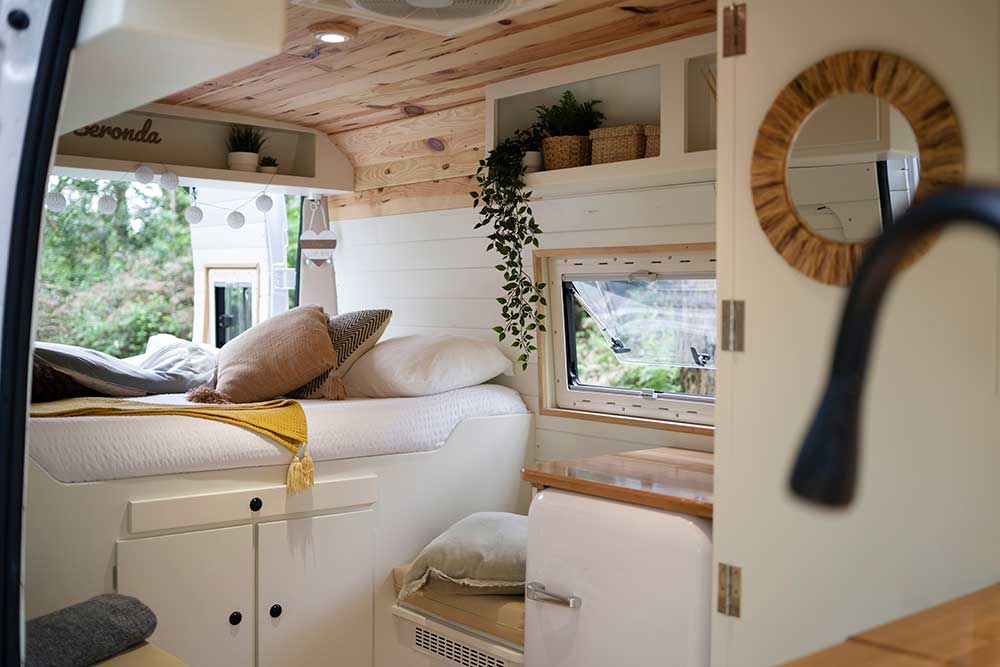
Adaptive and Transformable Spaces
In an era of rapidly increasing urbanisation and soaring property prices, the challenge of optimising living spaces becomes a pressing concern. The future of interior design lies in creating adaptive and transformable spaces that can effortlessly cater to the multifaceted needs of modern living. These innovative interiors embrace flexibility, ensuring every square foot is utilised to its fullest potential, regardless of the space constraints.
Multifunctional Furniture for Flexibility
At the core of adaptive interior design are multifunctional and flexible spaces that seamlessly adapt to various activities throughout the day. Innovative furniture designs play a pivotal role in this transformation, offering dynamic solutions that effortlessly transition between different purposes. Modular sofas, for instance, can be reconfigured to create different seating arrangements, accommodating everything from intimate gatherings to cosy movie nights. Transformable coffee tables that can be extended or elevated, serving as dining tables or workstations, exemplify the versatility that modern interior design can achieve.
Maximising Space with Hidden Storage Solutions
In the pursuit of maximising space, interior designers increasingly incorporate hidden storage solutions that blend seamlessly into the overall design. These concealed compartments cleverly hide clutter and belongings, maintaining a clean and uncluttered appearance while providing ample storage space. Transformable elements, such as walls that double as bookshelves or partition screens, offer creative space-saving solutions that integrate form and function seamlessly.
Convertible Furniture for Compact Living
For compact living spaces, where every inch counts, interior designers are embracing the concept of convertible furniture. Innovative designs such as wall beds, also known as Murphy beds, ingeniously fold up into the wall during the day, liberating floor space for other activities. These space-saving solutions optimise living areas and promote an organised and aesthetically pleasing environment.
Embracing Adaptable Environments
Beyond the traditional notions of fixed spaces, interior designers are exploring adaptable environments that cater to their occupants’ ever-changing needs and preferences. The concept of open-plan layouts has gained popularity, promoting seamless transitions between living, dining, and kitchen areas. By creating fluid connections, these designs foster a sense of openness and spaciousness, even in limited square footage.
Integrating Technology for Dynamic Spaces
Another fascinating aspect of adaptive interior design is integrating technology to create dynamic spaces. Smart home automation systems offer personalised settings for different activities, adjusting lighting, temperature, and ambience to suit specific needs. With just a few taps on a smartphone or voice commands to a virtual assistant, living spaces can transform from cosy relaxation zones to vibrant entertainment hubs.
Moreover, the concept of sustainability extends to adaptive interior design. By optimising space and embracing multifunctional solutions, designers can reduce the need for excessive resources and minimise waste. The use of eco-friendly materials in these adaptable spaces further supports an environmentally conscious approach to interior design.
Sustainability in Adaptive Interior Design
The future of sustainable interior design lies in the realm of adaptive and transformable spaces that creatively address the challenges of urban living. Multifunctional furniture, hidden storage solutions, and convertible elements pave the way for innovative designs that optimise every inch of living space. By embracing technology and sustainable practices, interior designers create living environments that fluidly adapt to the ever-changing needs and desires of their inhabitants. In this dynamic landscape, interior design transcends traditional boundaries to craft spaces that are not only aesthetically pleasing but also practical and mindful of the environment.
Innovative Space-Saving Solutions: Convertible Furniture for Cosy Living Spaces
Check out this Dripex Sit-Stand Desk On Wheels 🌟
Elevate Your Workspace with the Dripex Sit-Stand Desk! ✨ It’s the Ultimate Height-Adjustable Computer Desk on Wheels, Perfect for Your Home Office. Say Hello to a Rolling Mobile Office Writing Table Riser and Experience the Joy of a Standing Workstation! 💻Let’s Make Work Fun Again!” 🏡🌈
Check out this Yaheetech Lift-Up Coffee Table 🌟
Discover the Magic of the Yaheetech Lift-Up Coffee Table! ☕ Elevate Your Living Room or Reception with this Space-Saving Wonder. It Features a Hidden Storage Drawer and Open Shelf – Perfect for Hiding Clutter and Displaying Your Favorite Decor! Let’s Add a Dash of Charm to Your Space!” 🏡
Check out this Versatile Vonanda Sofa Bed🌟
Meet the Versatile Vonanda Sofa Bed – Your 4-in-1 Multi-Function Marvel! ✨ It’s Not Just a Chair; It’s a Folding Ottoman, a Modern, Breathable Linen Guest Bed, and an Adjustable Sleeper, All in One! Perfect for Cosy Apartments and Small Rooms. Let’s Embrace Compact Living with Style!” 🏡💤🌼
Check out this HOLLUDLE Ergonomic Office Chair🌟
Introducing the HOLLUDLE Ergonomic Office Chair – Your Ultimate Comfort Companion! 💼 It’s Not Just Any Chair – Packed with a Foldable Backrest, Flip-up Armrests, Mesh Lumbar Support, and Tilt Function for Big and Tall Comfort! 💻🪑💫
Check out this Spranster Super Strong Folding Step Stool 🌟
Get Ready to Reach New Heights with the Spranster Super Strong Folding Step Stool! 💪 This 11-inch wonder is not just sturdy enough to hold up to 300 lbs, but it’s also super lightweight and foldable! With its one-flip opening, it’s a breeze for adults and kids alike. Perfect for conquering kitchen cabinets, bathroom shelves, and bedroom adventures!” 🚀👣

Designing the Future of Our Living Spaces
As we traverse the exciting landscape of interior design’s future, it becomes abundantly clear that innovation, sustainability, and human-centric design are the guiding stars that will lead us into a new era of living experiences.
Harmony Between Modernity and Nature
The convergence of smart home technology, artificial intelligence, and biophilic design creates a symphony of harmony between the modern world and the natural environment. These innovations imbue our living spaces with responsiveness and connectivity that enhance comfort, convenience, and well-being, elevating our daily interactions with our homes to an entirely new realm.
Personalisation through 3D Printing and Sustainable Materials
The remarkable potential of 3D printing and sustainable materials transcends mere aesthetics, empowering us to personalise our living environments with bespoke creations that reflect our unique tastes and values. Moreover, the ease of design shifts the power from mass production to individuality, breathing life into our spaces with creations that speak to our identities and desires.
Environmental Responsibility and Well-Being
Moreover, the integration of sustainable and eco-friendly materials not only reduces our ecological footprint but also enhances the health and well-being of our indoor environments. By embracing responsible choices in materials, we can create living spaces that nurture both the planet and its inhabitants, bridging the gap between aesthetic beauty and environmental responsibility.
Embracing Flexibility and Functionality
The advent of adaptive and transformable spaces marks a departure from rigid design conventions, embracing the art of flexibility and functionality. Regardless of space limitations, we are now empowered to optimise our living areas, creatively adapting them to meet our ever-changing daily needs and activities. The liberation of design from the confines of fixed spaces ushers in a new era of dynamic and versatile interiors, where form and function effortlessly come together.
Fusing Technology and Nature for Human Aspirations
The future of sustainable interior design is a celebration of human ingenuity, where technology and nature, sustainability and creativity, converge to shape spaces that resonate with our deepest desires and aspirations. As we embrace these mind-blowing innovations, we embark on a journey that goes beyond aesthetic beauty to create living spaces that enrich our lives on a profound level.
Transformative Power of Sustainable Interior Design
In this journey towards the future, interior design transcends the realm of decoration to become a transformative force that influences how we live, work, and connect with one another. The designs we create today will impact future generations, shaping how they experience and appreciate their living spaces. As designers, homeowners, and consumers, we hold the power to shape this future, choosing a path that embraces sustainability, technology, and creativity in equal measure.
Reflection of Values and Aspirations
With every step we take towards a more innovative and responsible future of interior design, we build a world where our living spaces truly become reflections of our values, aspirations, and connection to the world around us. Together, we embark on this awe-inspiring journey, unlocking the full potential of sustainable interior design to create spaces that inspire, nurture, and leave a lasting legacy for generations to come. The future is vibrant, and the possibilities are boundless – let us design the future of our living spaces with passion, purpose, and a profound commitment to creating a better world for all.
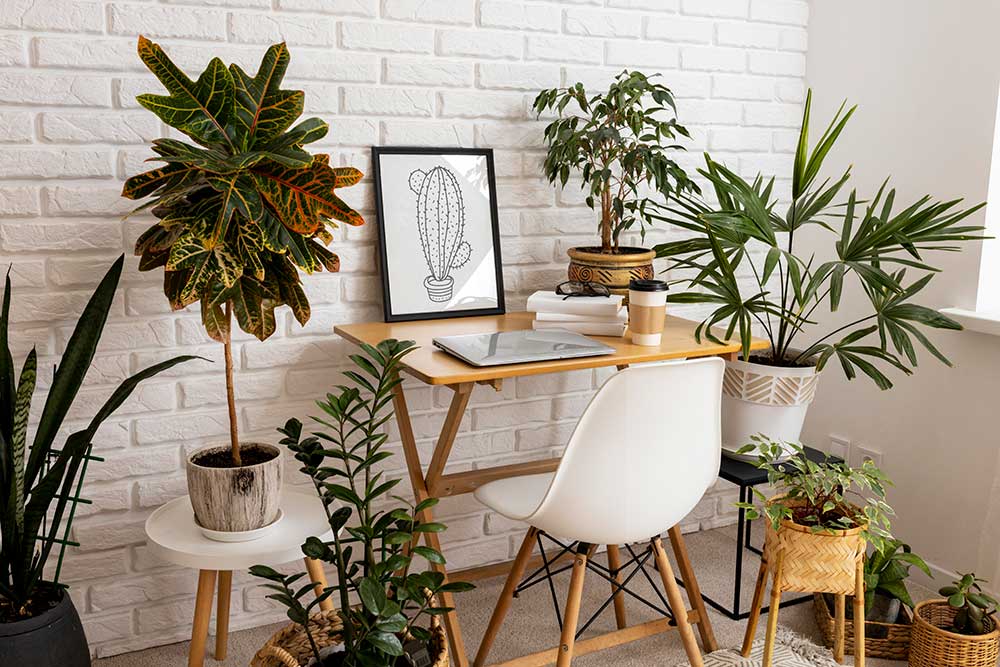
FAQ:
Q1: How does smart home technology enhance interior design?
A1: Smart home technology enhances interior design with convenience, energy efficiency, and personalised experiences. Homeowners effortlessly manage lighting, temperature, security, and entertainment through voice-controlled systems and interconnected devices, creating a comfortable living environment. AI-powered design tools also streamline the creative process, generating personalised solutions based on client preferences and trends.
Q2: What is biophilic design, and why is it gaining popularity?
A2: Biophilic design incorporates natural elements to improve well-being and connection with nature. It includes living green walls, natural lighting, and sustainable materials. Its popularity is rising due to its positive impacts on mental and physical health, as well as its contribution to eco-friendly interior design.
Q3: How is 3D printing transforming interior design?
A3: With 3D printing, interior designers create intricate custom elements. They overcome previous production challenges. From unique furniture to decor objects, 3D printing offers design freedom. Moreover, it promotes sustainability by using recyclable materials and reducing waste. As technology becomes accessible, homeowners embrace 3D printing for personalised decor, fostering a DIY design culture.
Q4: What are some eco-friendly materials used in interior design?
A4: In sustainable interior design, eco-friendly materials include recycled items like reclaimed wood and metal. These materials add character and reduce the need for new resources. Organic options like bamboo and cork are renewable and biodegradable, perfect for flooring and furniture. Moreover, bio-based materials, like wheat straw and corn husks, provide sustainable alternatives that sequester carbon during growth.
Q5: How do adaptive and transformable spaces benefit urban living?
A5: Adaptive and transformable spaces bring immense benefits to urban living. They maximise limited square footage and optimise functionality. These interiors cater to ever-changing needs and activities in dense urban environments with scarce space. Multifunctional furniture, hidden storage solutions, and convertible elements adapt seamlessly to various purposes. This ensures efficient utilisation of every inch. Embracing flexibility and dynamic design, urban dwellers enjoy versatile living areas, transitioning effortlessly between work, leisure, and relaxation. This approach enhances comfort, organisation, openness, and spaciousness, making adaptive and transformable spaces essential solutions for modern urban living.
“As an Amazon Associate, I earn from qualifying purchases”

